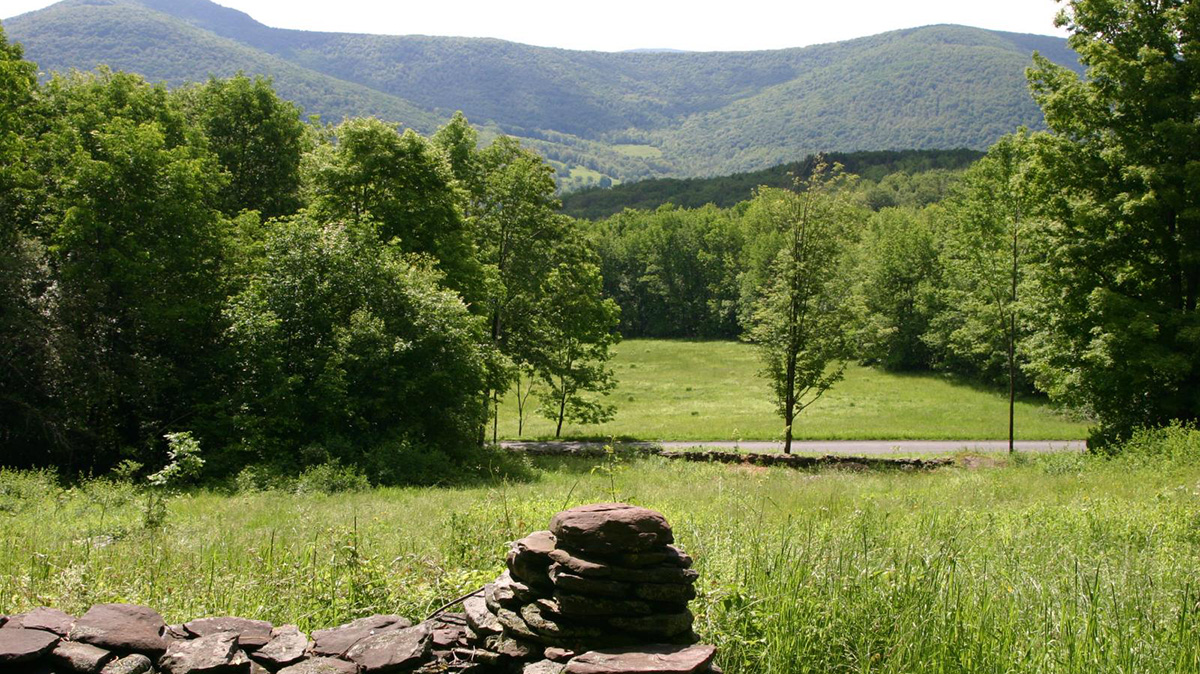Woodchuck Lodge and Slabsides on the Same Day
WOODCHUCK LODGE AND SLABSIDES ON THE SAME DAY
Text and Photographs by Mathew Tekulsky
On June 13, 2009, I drove down from my house in Vermont to attend a quiet, introspective celebration of John Burroughs Community Day in Roxbury, New York. By about 1:00 P.M., I arrived at Woodchuck Lodge, which had served as John Burroughs's summer home for the last decade of his life. Like a visitor whisked back a century in a time machine, I wandered about the interior, marveling at the relics of this great man: the satchel he used when he left home to teach school in nearby Olive; photographs of his parents Chauncey and Amy Kelly Burroughs; the cradle in which he and his siblings were rocked; a bookcase with editions of The Atlantic Monthly and Popular Science Monthly; the desk in the parlor, on which his old pens and his spectacles are displayed; even his scythe, still standing in the pantry (see Photo 1).
Out on the porch, I breathed in the literary history that was in the air. As I scanned the rolling hills, I recalled Burroughs's own words about this place. “The boon is mine when I go to my little gray farmhouse on a broad hill-slope on the home farm in the Catskills,” he wrote in “In ‘The Circuit of the Summer Hills’” (1913). Now the boon was mine, but even more extraordinary was the sense that I was not an interloper in this man’s home. I had the feeling that he did not really consider himself the owner of this property, just the caretaker. To Burroughs, the world was an open book, and his surroundings were an integral part of that book.
I spent the night in Roxbury and rose early the following morning, eager to return to Woodchuck Lodge to take some photographs. Now, at 8:00 A.M., the sun breaks out of the clouds and glistens down on Woodchuck Lodge (see Photo 2). The shutters are closed and I am alone. “The peace of the hills is about me and upon me,” Burroughs wrote, “and the leisure of the summer clouds, whose shadows I see slowly drifting across the face of the landscape, is mine. The dissonance and the turbulence and the stenches of the cities—how far off they seem!” I deeply inhale the Catskill air and pause to observe a group of brown-headed cowbirds, and an American robin gathering nesting materials.
As I leave Woodchuck Lodge, I pause a short distance up the road, past Burroughs Memorial Field, to inspect his old homestead: the farmhouse in which Burroughs grew up and the adjacent cow barn. Along the way, I see the remains of the stone walls that Burroughs, his father, and his brothers built with the rocks that they had removed from the fields in order to clear them for farming. Standing at his birth site, I try to imagine the young Burroughs calling after the cows, gathering blackberries with his mother, and making his first observations of the Black-throated Blue Warbler, which opened the door to nature study for the rest of his life.
I return to Burroughs Memorial Field, where a stone path leads to the gravesite (see Photo 3). Here, a stone wall built in the shape of a square encloses Burroughs’s grave. Facing the gravesite is a drift boulder that he had named “Boyhood Rock,” because he spent many hours perched on this rock during his youth, pondering the wonders of the natural world. I read the words engraved on the bronze memorial tablet that is attached to it, from Burroughs’s poem “Waiting”: “I stand amid the eternal ways and what is mine shall know my face.” A bas-relief of Burroughs sitting on his beloved rock decorates the tablet. Standing beside the grave, I gaze at the hills in the distance and marvel at Burroughs’s sense of place, both when he was alive and even now (see Photo 4). “To feel to the full the peace of the hills, one must choose his hills, and see to it that they are gentle and restful in character,” he wrote. “Long, undulating mountain lines, broad, cradle-like valleys, easy basking hill-slopes, as well as the absence of loud and discordant sounds, are a factor in the restfulness of any landscape.”
I stop for a final look at Woodchuck Lodge and then head back down the valley to Roxbury. Shortly after 10:30 A.M., I set out across the Catskills to West Park, New York, to visit Burroughs’ famous cabin Slabsides. I arrive at the entrance to the John Burroughs Sanctuary at 1:00 P.M., hike down the trail, and stop in front of a wooden sign attached to a tree. The following words are painted on it, from Burroughs’ essay “The Art of Seeing Things” (1908): “If I were to name the three most precious resources of life, I should say books, friends, and nature; and the greatest of these, at least the most constant and always at hand, is nature.” A few steps later, I enter a familiar clearing and gaze upon Slabsides (see Photo 5).
After taking a ceremonial stroll around the front porch, I embark on a walk along the swamp to a rocky outcrop that towers above it. I climb to the top and look out at the swamp below, marveling at Burroughs’ ability to grow thousands of celery plants on this site over one hundred years ago. In his essay “The Old Ice-Flood” (1912), Burroughs described a striking geological feature just up the hill from where I am standing: “Three or four hundred feet above my cabin, five or six hundred feet above tidewater, there is a bold rocky point upon which the old ice-sheet bore heavily. It has rubbed it down and flattened it as a hand passing over a knob of soft putty might do.” During the Pleistocene epoch, he explained, the area was covered with an ice sheet that was two to three thousand feet thick. Indeed, “it filled all the Hudson River Valley, and covered the landscape for thousands of miles.” On my way back to the cabin, I am mesmerized by the green leaves of the ferns and trees, and by the sun streaming down on the trail, the glacier long since gone (see Photo 6).
Leaving the cabin behind, I make my way down to Sanctuary Pond, where I hike along a dirt road until I reach a beautiful view of the peninsula that juts out into the middle of the pond (see Photo 7). I head along the Peninsula Trail to the tip of the point, where I pause to take in the majestic scene before me—the reflection of the green-leaved trees in the water, the gray rocks showing their presence on the shore, and the lily pads in the foreground (see Photo 8). Burroughs’s description of nearby Black Creek applies to Sanctuary Pond as well: “In the more open places the woods mirror themselves in the glassy surface till one seems floating between two worlds, clouds and sky and trees below him matching those around and above him,” he wrote in “Wild Life About My Cabin” (1899).
There are no clouds in the sky this day, and I am at peace with the world.
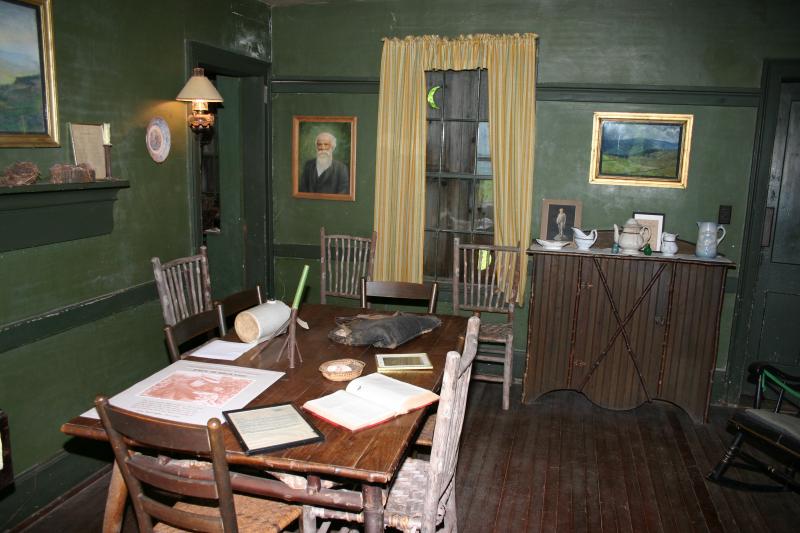
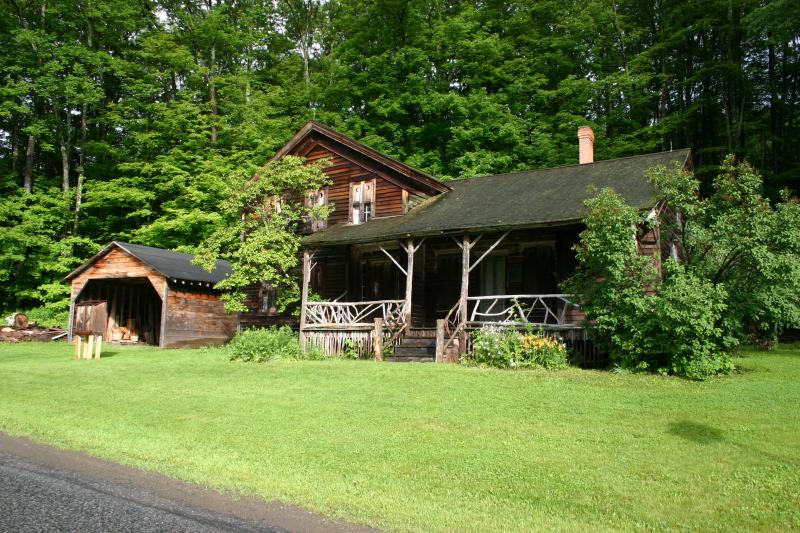
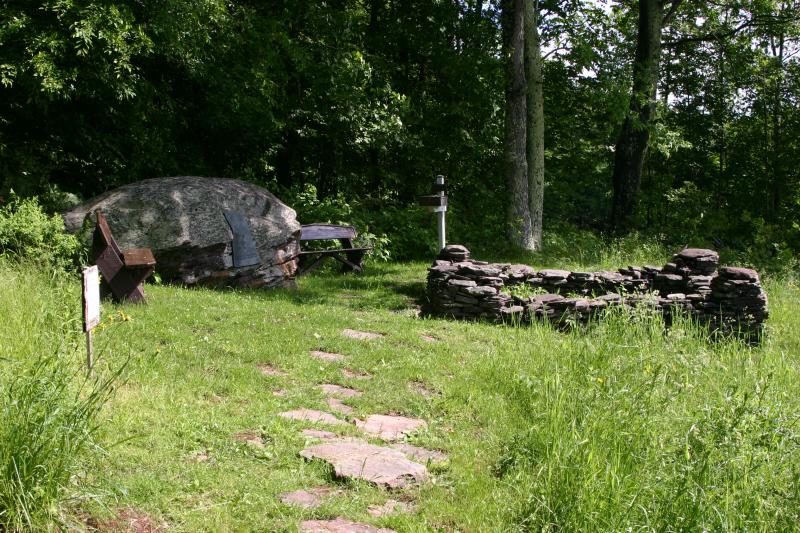
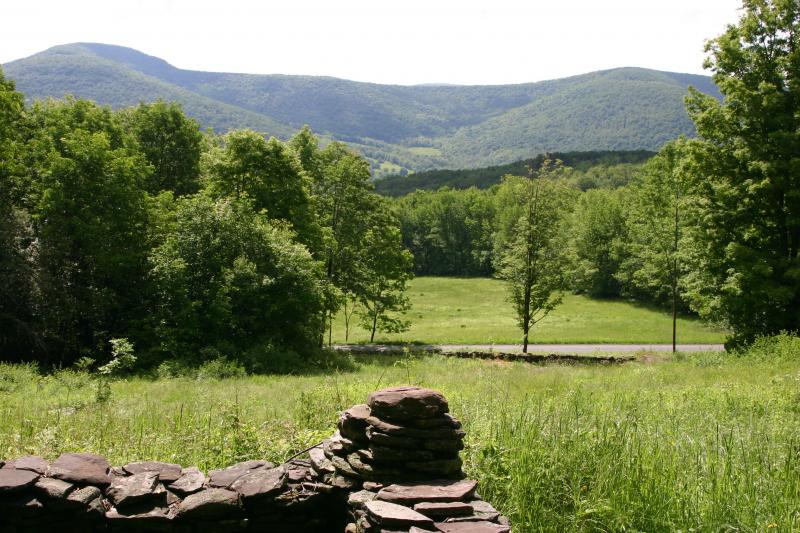
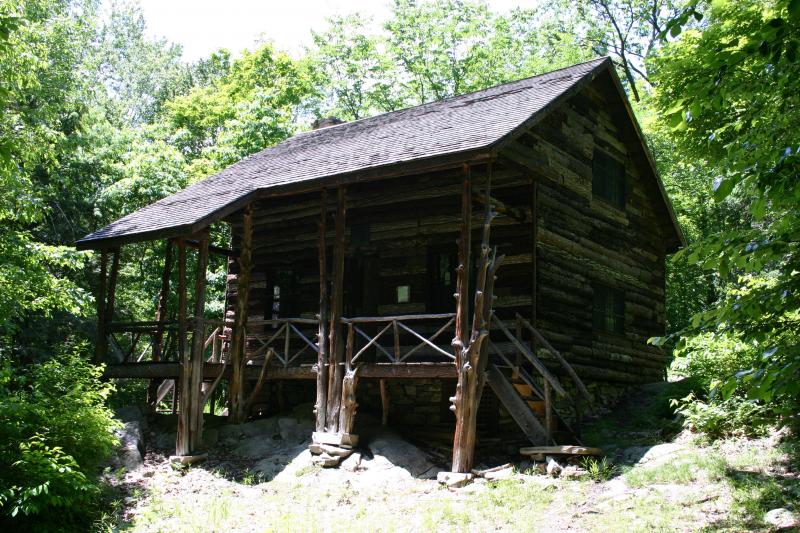
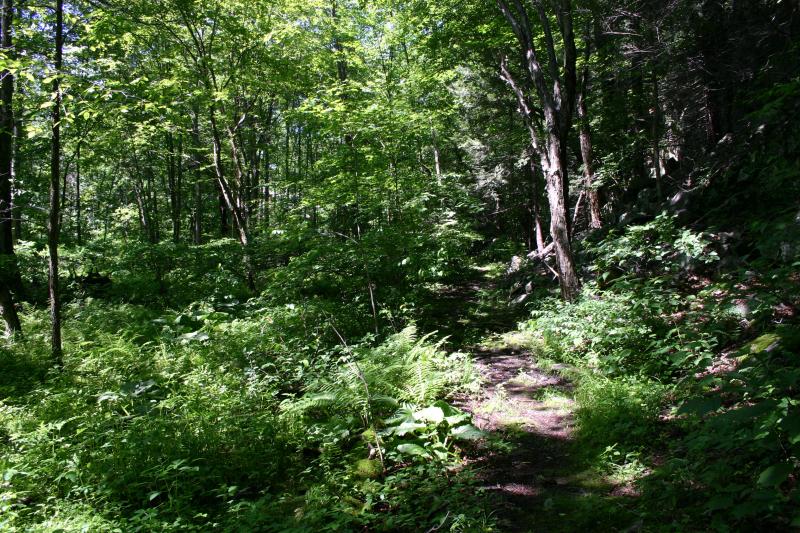
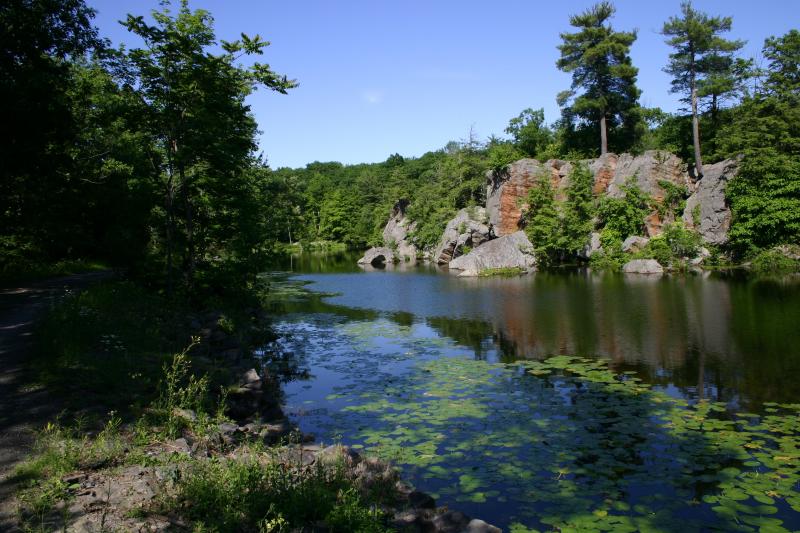
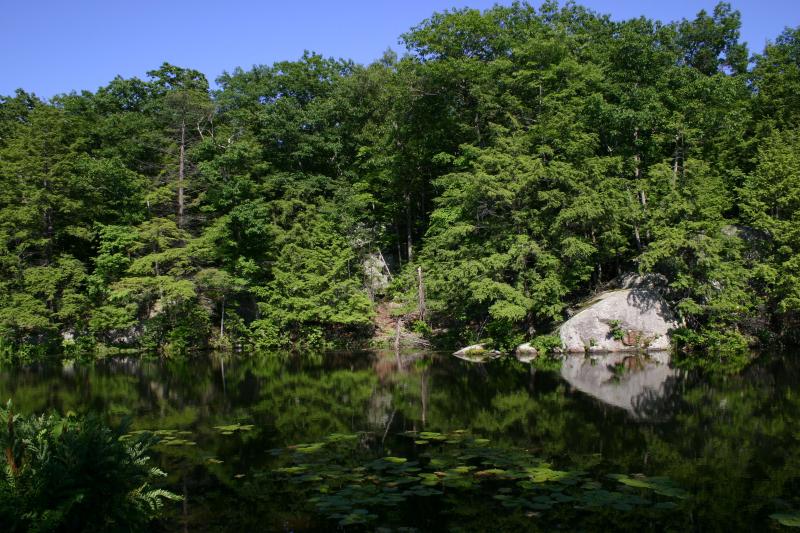
Photo Captions:
Photo 1: Woodchuck Lodge interior with John Burroughs’ satchel on the table
Photo 2: Woodchuck Lodge in the early-morning sunlight
Photo 3: John Burroughs’ grave (right) and Boyhood Rock (left) at Burroughs Memorial Field
Photo 4: View of the Catskills from John Burroughs’ grave
Photo 5: Slabsides in the early-afternoon sunlight
Photo 6: Walking back to Slabsides along the Ridge Trail
Photo 7: Pond Lane Trail (left) and peninsula (right) at Sanctuary Pond
Photo 8: View across Sanctuary Pond from the tip of the peninsula
Recommended
Nor’easter
Post-Op Appointment With My Father
Cedar Valley Youth Poet Laureate | Fall 2024 Workshop


